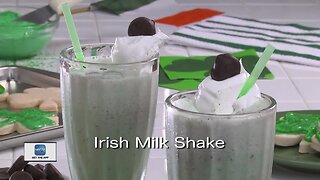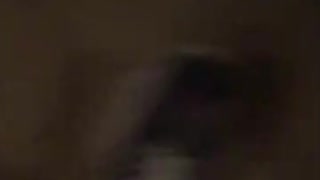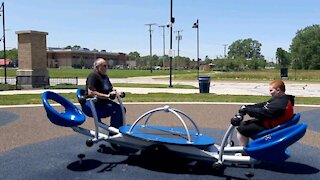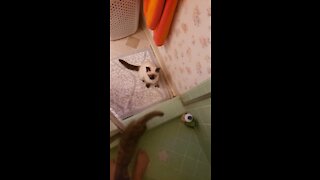Premium Only Content

Anyone for a Cockroach Milk Shake ?
The milk crystals of the Pacific beetle cockroach are not only beautiful to look at, but they are filled with super rich nutrients.
It all began with curiosity. When Nathan Coussens, a young researcher at Iowa noticed shiny crystals spilling out of a roach’s gut, he was intrigued. He showed the crystals to a fellow researcher who dismissed them as organic salt crystals commonly found in the gut of insects, birds and reptiles. But Coussens thought they were special, and so they turned out to be. The crystals were made of milk protein.
Slice open an embryonic roach under a microscope, and the crystals spill out in a shower of nutrient-dense glitter.
So what does it taste like ? Well, Subramanian Ramaswamy, a biochemist at the Institute for Stem Cell Biology and Regenerative Medicine in Bangalore, India, told The Washington Post as much early Tuesday. As a party dare — he’d lost a drinking competition — one of Ramaswamy’s colleagues once ate a sprinkling of the crystals. Ramaswamy said :
“He said it doesn’t taste like anything special.”
So what's so special about this particular roach that it actually lactates ? It doesn't lay eggs like most other roaches. It gives birth to live young, keeping its babies by the dozen in fleshy organs called brood sacs. Like humans, mama Pacific beetle cockroaches produce food for their offspring. The embryos feed on a liquid substance packed with fats, sugars and protein. In simple terms, it's cockroach milk.
It was while working on a roach species called Diploptera punctata at the University of Iowa, that Coussens first discovered these crystals. D. punctata is a strange insect with a mammal-like quality – it “lactates”, producing milk to feed its brood. The crystals that Coussens had found were actually milk proteins that had crystallised within the guts of roach younglings.
Now, nearly 10 years after the initial discovery of the crystallised milk proteins, their structure has been solved by an international team of scientists including those from the Institute for Stem Cell Biology and Regenerative Medicine (inStem), Bangalore. Ramaswamy S., then a faculty member at the University of Iowa (with Coussens who was his former student) and now a faculty member at inStem, admits,
“I just thought they were uric acid crystals. But Nathan was right to have been so persistent. They were protein crystals.”
A single crystal is estimated to contain more than three times the energy of an equivalent mass of dairy (buffalo) milk, according to the study by inStem's Ramaswamy group.
Sanchari Banerjee, one of the main authors of the paper published in July in the journal from the International Union of Crystallography. states :
"The crystals are like a complete food -- they have proteins, fats and sugars. If you look into the protein sequences, they have all the essential amino acids"
Now, armed with the gene sequences for these milk proteins, Ramaswamy and colleagues plan to use a yeast system to produce these crystals en masse. Furthermore, their crystalline nature offers a unique advantage. As the protein in the solution is used up, by being digested, the crystal releases protein at an equivalent rate.
Ramaswamy enthused :
"They're very stable. They can be a fantastic protein supplement. It's time-released food, if you need food that is calorifically high, that is time released and food that is complete. This is it."
Besides their utility as supplemental food, the scaffolding in the milk protein crystals show fascinating characteristics – ones that could be used to design nanoparticles for drug delivery.
Ramaswamy states :
“But this work was a huge technical challenge.”
The team had to try a variety of methods to solve the milk protein’s structure and the data were painstakingly collected. However, given the potential uses of these crystals, the efforts seem well worth the costs of a study driven simply by the desire to explore a strange phenomenon.
Ramaswamy adds :
“There is tremendous value for curiosity driven science that makes non-incremental progress in scientific discoveries and progress. And none of this would have been possible if it were not for curiosity.”
For the boffins out there, you can read the paper here :
Structure of a heterogeneous, glycosylated, lipid-bound, in vivo-grown protein crystal at atomic resolution from the viviparous cockroach Diploptera punctata ( http://journals.iucr.org/m/issues/2016/04/00/jt5013/index.html )
-
 1:46
1:46
WGBA
4 years agoMr. Food: Irish Milk Shake
20 -
 0:10
0:10
Dima_dima
4 years agotenacious cockroach
38 -
 0:04
0:04
lauriefreier
4 years agoWD 40 anyone?
15 -
 0:11
0:11
realLanaB2A
4 years agoNose cleaning anyone??
703 -
 3:24
3:24
WMAR
4 years agoAnyone Rides
44 -
 5:46
5:46
Davidtheexplorer
4 years agoHas anyone else experienced this
118 -
 0:07
0:07
rumblestaff
4 years agoHe didn’t fool anyone... 😆
108 -
 0:20
0:20
knasa11
4 years agoShake that tail
29 -
 0:22
0:22
Plebsterdebster
4 years agoShake it
82 -
 0:30
0:30
ShannonBelk
4 years agoShower anyone
107